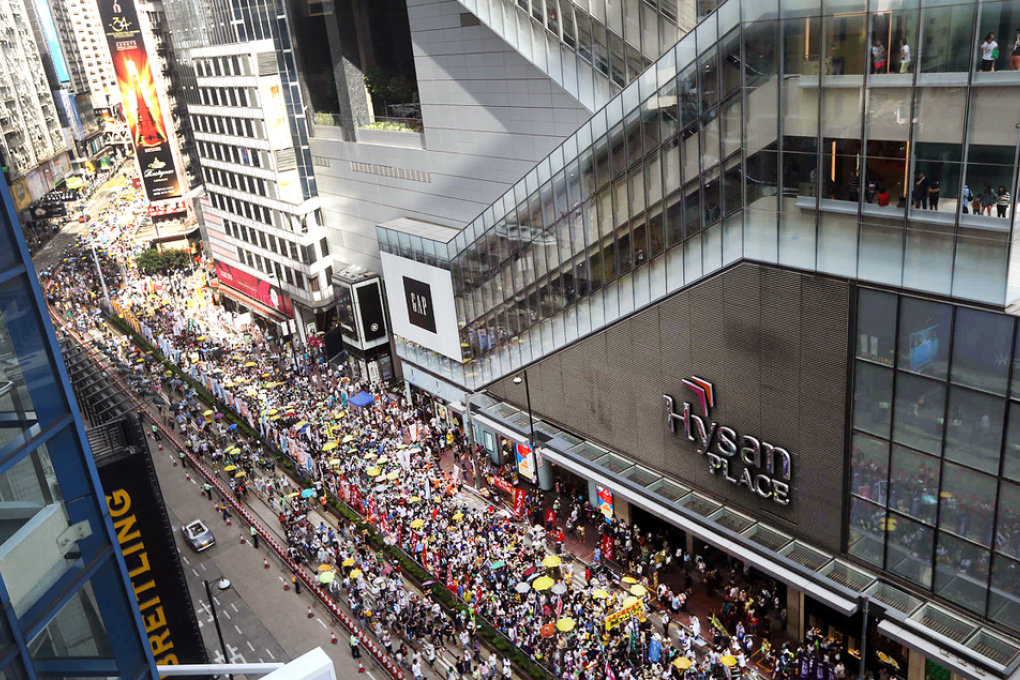Update | July 1 march concludes, with turnout at lowest level since 2008
Organisers say just 48,000 people joined today's annual July 1 march, the lowest turnout for the annual pro-democracy rally since 2008. The last of the marchers have now arrived at the rallying point at government headquarters in Admiralty, close to the site of the main Occupy sit-in last year.

Protesters have arrived outside government headquarters in Admiralty as a poorly attended July 1 march for democracy reaches its end with the lowest turnout since 2008.
Organisers say just 48,000 people joined the march - the first since last year's Occupy sit-ins - with some blaming protest fatigue and the lack of an obvious goal after the government's political reform plan was rejected for the poor attendance. Police - who traditionally offer far lower figures for turnout than the organisers - said just 6,240 people started the march, with peak participation at 19,650, also the lowest level since 2008. Independent observers from the University of Hong Kong's public opinion programme put the figure at 28,000.
"As long as we don't see democracy ... we won't succumb to challenges to continue to stand firm with fellow Hongkongers in the battle for democracy," said Daisy Chan Sin-ying, convenor of march organiser the Civil Human Rights Front.
The head of the march reached the end point at about 5.15pm, and participants are now joining a discussion forum on what society should do after the reform debate. The last of the marchers reached the end of the route not long after 7pm.
The annual march kicked off in Victoria Park, Causeway Bay, at about 3pm.
The Civil Human Rights Front, the organiser of the pro-democracy march, held a rally at Victoria Park in Causeway Bay at 2pm but crowds only filled about one and a half soccer pitches.